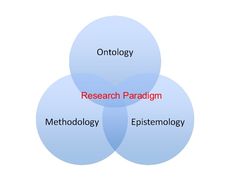Introduction

Ever felt overwhelmed by the vast landscape of dissertation research methods? Choosing the right approach can feel like navigating a labyrinth, with each path holding its strengths and limitations. But fear not, intrepid scholar! This comprehensive guide will equip you with the knowledge and tools to select the research method that best serves your dissertation confidently.
The foundation of a robust dissertation lies in a well-aligned dissertation research method. The bridge connects your research question to your data, ultimately shaping the entire research journey. There are two main paradigms within this realm: quantitative and qualitative research. Quantitative research emphasizes objectivity, measurement, and hypothesis testing, often relying on surveys and experiments to gather numerical data. Qualitative research, on the other hand, delves into the subjective world of experience and meaning, employing interviews, focus groups, and ethnography to understand participants’ perspectives.
Understanding the nuances of both quantitative and qualitative methods empowers you to make informed decisions. This guide will break down each paradigm, exploring the strengths and weaknesses of various research methods. We’ll delve into when each approach best suits your research question and how to choose the method that unlocks your dissertation’s most insightful and impactful findings.
By the end of this journey, you’ll be well-equipped to navigate the world of dissertation research methods confidently. You’ll understand how to select the right approach to effectively collect data, ensure a robust research design, and ultimately contribute valuable knowledge to your field. So, grab your metaphorical compass and prepare to chart a course towards a successful dissertation defense.
Part 1: The Research Paradigms

Dissertation research methods can be broadly categorized into two main paradigms: quantitative and qualitative. Understanding each approach’s core principles and applications empowers you to make informed decisions about the methodology that best aligns with your research question and objectives.
Quantitative Research: The Realm of Numbers and Measurement
Quantitative research prioritizes objectivity and relies on numerical data to test hypotheses and identify relationships between variables. This approach emphasizes:
·Objectivity: Researchers strive to minimize bias by employing standardized data collection methods and statistical analysis.
·Measurement: Quantitative research translates concepts into measurable variables that can be quantified and analyzed statistically.
·Hypothesis Testing: Formulated hypotheses guide the research, allowing researchers to test predictions and draw conclusions based on statistical evidence.
Strengths of Quantitative Research:
·Generalizability: Findings can be generalized to a broader population, allowing for broader implications and contributions to the field.
·Replicability: Quantitative studies are designed to be replicated by other researchers, strengthening the validity and reliability of findings.
·Statistical Analysis: Statistical tools provide powerful insights into relationships between variables and allow for high-precision testing hypotheses.
Weaknesses of Quantitative Research:
·Limited Context: The focus on measurement can sometimes overshadow participants’ rich context and lived experiences.
·Oversimplification: Complex phenomena may be reduced to variables, potentially overlooking nuances and intricacies.
·Potential for Bias: Bias can be introduced during data collection, for example, through poorly designed surveys or leading questions.
Quantitative Research Methods in Action:
·Surveys: Structured questionnaires gather data from a large sample, allowing researchers to measure attitudes, opinions, and behaviours.
·Experiments: Controlled environments are used to manipulate variables and test their impact on specific outcomes.
·Content Analysis: Systematic coding and analysis of textual data (e.g., documents, social media posts) reveal patterns and trends.
When to Choose Quantitative Research:
Quantitative methods are ideal when your research aims to:
·Test hypotheses about relationships between variables.
·Measure the prevalence of a phenomenon within a population.
·Gain generalizable insights applicable to a broader audience.
Qualitative Research: Unveiling the Subjective World
Qualitative research delves into the subjective world of human experience, aiming to understand how individuals perceive and interact with the world around them. Key principles include:
·Subjectivity: Researcher interpretations and participant perspectives are central to data collection and analysis.
·Interpretation: Researchers aim to interpret and make sense of the data, uncovering themes and patterns within participants’ experiences.
·Understanding Experiences: The focus is on deeply understanding participants’ perspectives, motivations, and lived realities.
Strengths of Qualitative Research:
·In-Depth Exploration: Qualitative methods allow for a rich and nuanced understanding of complex phenomena.
·Rich Data: Interviews, focus groups, and ethnography generate detailed and descriptive data, offering a deeper understanding of participants’ perspectives.
·Understanding Participants’ Perspectives: The subjective nature of qualitative research allows researchers to capture the lived experiences and meanings participants attribute to their experiences.
Weaknesses of Qualitative Research:
·Limited Generalizability: Findings may not be easily generalizable to a broader population due to the focus on individual experiences.
·Potential for Researcher Bias: Researcher biases can influence data collection and interpretation.
·Subjectivity in Data Analysis: Qualitative analysis involves interpretation, which can introduce subjectivity into the research process.
Qualitative Research Methods in Action:
·Interviews: In-depth conversations with participants allow researchers to explore their experiences, perceptions, and perspectives.
·Focus Groups: Group discussions facilitate exploring shared experiences and generate rich data on group dynamics and social interactions.
·Ethnography: Immersive observation within a specific culture or setting allows researchers to understand participants’ cultural context and lived experiences.
·Case Studies: An in-depth exploration of a single individual, group, or event provides a detailed understanding of a specific phenomenon.
When to Choose Qualitative Research:
Qualitative methods are well-suited when your research aims to:
·Understand the lived experiences of individuals or groups.
·Explore a phenomenon in depth and gain rich insights from participants’ perspectives.
·Generate new theories or hypotheses to guide future research.
By understanding the strengths and weaknesses of quantitative and qualitative research, you’ll be well-equipped to choose the dissertation research method that empowers you to answer your research question effectively and contribute valuable knowledge to your field. The next part of this guide will explore selecting the right method based on your research goals and the nature of your topic.
Part 2: Choosing the Right Method for Your Dissertation

Having explored the two main paradigms of dissertation research methods, quantitative and qualitative, we now focus on selecting the approach that best aligns with your research project. This decision hinges on several key factors:
Factors Guiding Your Choice:
·Research Question and Objectives: The nature of your research question is the most crucial factor. Is your aim to describe a phenomenon (descriptive), explain the “why” behind something (explanatory), or evaluate the effectiveness of a program (evaluative)? Quantitative methods excel at descriptive and explanatory questions that involve measuring variables and testing hypotheses. On the other hand, qualitative methods are well-suited for exploring experiences, uncovering meanings, and generating new insights – ideal for descriptive and explanatory questions focusing on human experience.
·Nature of the Research Topic: Consider the inherent nature of your research topic. Is it a topic that lends itself to numerical data and statistical analysis (e.g., the impact of social media use on student engagement)? Or is it a topic delves into subjective experiences and interpretations (e.g., the lived experiences of single mothers returning to college)? Understanding the inherent nature of your topic will guide you towards a more suitable research method.
·Feasibility Considerations: Don’t overlook practical considerations like data availability, resource constraints, and time limitations. Quantitative research often requires access to large datasets or the ability to conduct surveys or experiments. Qualitative research, while potentially less data-intensive, may require significant time investment for conducting interviews or observations. Be realistic about the resources and timeframe available to complete your dissertation.
·Your Strengths and Preferences: As a researcher, you bring your unique skillset and preferences. Are you comfortable designing surveys and analyzing statistical data? Or do you find yourself drawn to in-depth interviews and qualitative analysis? Consider your strengths and research style when making your decision.
Aligning Methods with Research Questions:
The following table provides a basic framework to illustrate how research questions and dissertation research methods can be aligned:
Research Question Type
Suitable Methods
Descriptive (What is…? How is…? Who is…?)
Surveys, content analysis, ethnography, case studies
Explanatory (Why…? How does…? What explains…?)
Surveys, experiments, case studies, qualitative comparative studies
Evaluative (What is the impact of…? How effective is…?)
Surveys, experiments, mixed methods (combining quantitative and qualitative data)
The Power of Mixed Methods:
In some cases, combining quantitative and qualitative methods, known as mixed methods research, can offer a more comprehensive understanding of a phenomenon. This approach, or triangulation, utilizes quantitative and qualitative data collection methods to provide a richer and more nuanced picture. For instance, you might utilize surveys to gather quantitative data on leadership styles, followed by in-depth interviews with leaders to explore the lived experience of those styles.
Advantages of Mixed Methods:
·Triangulation of Data: Provides a more holistic understanding by corroborating or challenging findings from one approach with the other.
·Comprehensive Understanding: Gather quantitative and qualitative data, offering a more complete picture of the research topic.
Challenges of Mixed Methods:
·Increased Complexity: Designing, conducting, and analyzing data from both quantitative and qualitative methods requires significant planning and expertise.
·Data Integration Difficulties: Merging and interpreting data from different methods can be complex.
Considering Mixed Methods:
Mixed methods research is a powerful tool but is only sometimes the most feasible option. Carefully consider the complexity and resource requirements before embarking on this approach. When quantitative and qualitative data are essential for answering your research question, mixed methods can be a valuable strategy to achieve a comprehensive understanding.
By carefully considering these factors and aligning your research question with the most suitable dissertation research methods, you’ll be well on your way to developing a robust research design for your dissertation. The next part of this guide will delve into specific quantitative and qualitative research methods, equipping you with the practical knowledge to navigate each approach effectively.
Part 3: In-Depth Exploration of Quantitative Research Methods
Quantitative research methods equip you with a powerful toolkit to gather numerical data, test hypotheses, and identify relationships between variables. This section delves into three commonly used quantitative research methods within dissertation research methods: surveys, experiments, and content analysis.
1. Surveys: Gauging Opinions and Behaviors Through Questionnaires
Surveys are a versatile tool for gathering data from a large sample population. They consist of structured questionnaires asking participants questions to measure attitudes, opinions, and behaviours. Surveys can be categorized as:
·Descriptive Surveys: Aim to describe the characteristics of a population (e.g., the prevalence of a specific behaviour).
·Explanatory Surveys: Explore relationships between variables (e.g., how leadership style impacts employee satisfaction).
·Exploratory Surveys: Gather initial insights into a new topic or issue to guide further research.
Survey Design Considerations:
·Questionnaire Development: Crafting clear, concise, and unbiased questions is crucial for gathering reliable data. Pilot testing the questionnaire on a small sample can help refine the wording and identify potential issues.
·Sampling Techniques: Selecting a representative sample from your target population ensures the generalizability of findings. Common sampling techniques include random sampling, stratified sampling, and cluster sampling.
·Data Analysis: Statistical software allows you to analyze quantitative survey data. Descriptive statistics provide data summaries, while inferential statistics help test hypotheses and identify relationships between variables.
Advantages of Surveys:
·Cost-Effectiveness: Surveys can be a relatively cost-effective way to gather data from a large sample.
·Efficiency: Electronic surveys allow for rapid data collection from geographically dispersed populations.
·Generalizability: Well-designed surveys can provide generalizable findings to the target population.
Disadvantages of Surveys:
·Low Response Rates: Securing a high response rate is crucial to ensure the representativeness of your data.
·Social Desirability Bias: Participants may answer questions in a way they perceive as socially desirable.
·Limited Context: Surveys may not capture the nuances and context behind participants’ responses.
2. Experiments: Isolating Cause and Effect
Experiments allow researchers to establish cause-and-effect relationships by manipulating variables and observing their impact on an outcome. There are three main types of experiments:
·True Experiments: The gold standard, involving random assignment of participants to experimental and control groups, ensuring the only difference between the groups is the manipulated variable.
·Quasi-Experiments: Lack of random assignment makes it more difficult to establish a clear cause-and-effect relationship.
·Ex-Post Facto Designs: Analyze existing data without manipulating variables, making it challenging to establish causality definitively.
Importance of Control and Randomization:
Experimental control is paramount. Researchers strive to minimize extraneous variables that could influence the outcome, allowing them to isolate the impact of the manipulated variable. Random assignment of participants to groups helps ensure that any pre-existing differences between groups are balanced out.
Ethical Considerations:
Ethical considerations are crucial in conducting experiments. Informed consent, participant protection, and data privacy must be carefully addressed throughout the research process.
Advantages of Experiments:
·Establishing Causality: Experiments are the strongest research method for establishing cause-and-effect relationships.
·High Internal Validity: Strong control over variables allows for confident conclusions about the impact of the manipulated variable.
·Replication: Other researchers can replicate well-designed experiments, strengthening the validity of findings.
Disadvantages of Experiments:
·Cost and Time: Experiments can be expensive and time-consuming, particularly for complex research questions.
·Artificiality: The controlled environment of an experiment may not reflect real-world conditions, limiting the generalizability of findings.
·Ethical Concerns: Ethical considerations must be carefully addressed to ensure participant well-being and informed consent.
3. Content Analysis: Unveiling Meaning in Textual Data
Content analysis involves systematically coding and analyzing textual data, such as documents, social media posts, or news articles. This method allows researchers to identify patterns, themes, and trends within the data. Two main types of content analysis are commonly used:
·Thematic Analysis: Identifying emerging themes within the data based on a coding scheme.
·Discourse Analysis: Examining how language constructs meaning and power dynamics within a specific context.
Conclusion: Charting Your Course to Dissertation Success

Throughout this comprehensive guide, you’ve explored the vast landscape of dissertation research methods. We’ve delved into the quantitative and qualitative paradigms, equipping you with the knowledge to make informed decisions about the approach that best aligns with your research question.
By now, you possess a strong foundation to navigate the exciting world of dissertation research. Remember, the chosen method bridges your research question and the data you collect, ultimately shaping the entire research journey.
Embrace Exemplary Dissertations
Dissertation research can feel like uncharted territory, but you don’t have to navigate it alone. Consider seeking guidance from exemplarydissertations within your field. Reviewing dissertations that have garnered recognition for methodological rigor can provide invaluable insights. These exemplars showcase effective research design, data collection techniques, and analysis strategies aligned with specific research questions. By studying these successful dissertations, you can glean best practices and gain inspiration for your research approach.
This guide has equipped you with the foundational knowledge to embark on your dissertation research journey confidently. Remember, the key to success is carefully aligning your research question with the most suitable method. Embrace the exploration process, leverage the valuable resources available, and don’t hesitate to seek guidance from mentors and successful dissertations in your field. With dedication and a strategic approach, you’ll be well on your way to crafting a dissertation that is methodologically sound and contributes valuable knowledge to your field.

